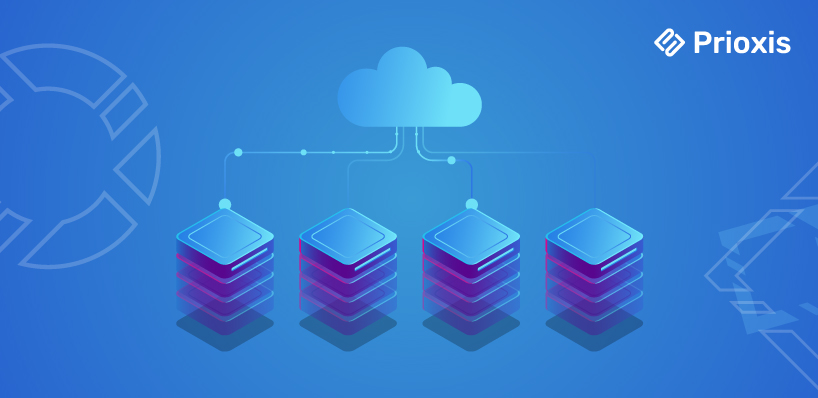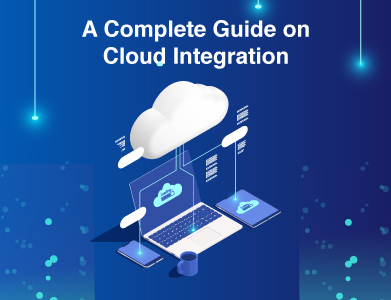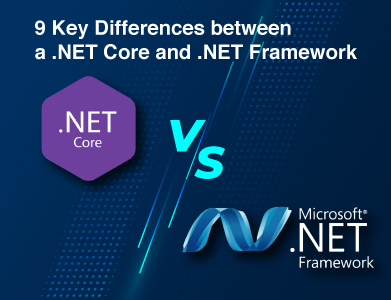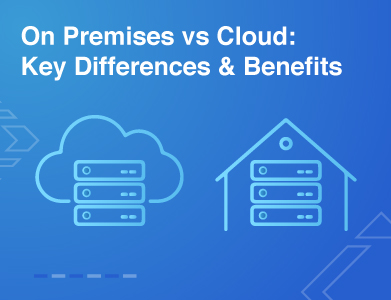Microservices Architecture: Key Benefits for Your Business
 Admin
Admin Microservices
Microservices Aug 25, 2025
Aug 25, 2025

Table of Content
Let’s take the example of a huge department store that has everything you need, but with only a single manager to serve all customers. Can you imagine what would happen to that person and the customers?
Everything would be a mess; if it had dedicated managers for every counter, the entire process would be smooth. Monolithic software architecture mirrors this situation in the real world. Here, microservices architecture comes as a saviour.
In a monolithic architecture, the entire application is developed, packaged, and deployed as a single unit. This is where the real issues grow. You experience them when you need to scale the application or update or resolve an issue: you have to take down the entire application.
Microservices architecture addresses these problems by dividing the software into units according to different functionalities and features. Most organizations worldwide have already adopted microservices architecture. To get the full potential out of microservices, you need a trustworthy microservices implementation partner.
Below are the key benefits of adopting microservices architecture in your business.
Benefits of Microservices Architecture
These are a few benefits experienced by businesses after adopting microservices architecture.

1. Improved Adaptability & Scalability
Take a walk through your memory and try to remember a few online marketplaces you have known off! Surely Amazon will be there in your list.
Did you know that in 2001, Amazon was struggling to scale to fulfill its customer demands? Developers were facing challenges in scaling, development delays and service inter-dependencies due to adoption of monolithic service architecture.
This incident made them shift to microservices architecture. They divided their application into several independent services, and assigned a separate team of developers to develop and optimize these microservices.
After that, they were able to adjust resources and features as per consumer demands. This resulted in an impressive improvement in their website's functionality. Thus, a microservice architecture can help scale individual components without affecting the entire application.
Also, in monolithic systems, you must take down the entire software to update. However, with Microservices Development Services, you only need to work on the service you want without affecting other components.
2. Enhanced Fault Isolation
Suppose you are running a restaurant, and you prepare all orders in a single kitchen. Now suddenly, there is a gas stove issue in the kitchen, preventing your chef from cooking food. This will not only affect the dine-in orders but your delivery orders as well.
And unless you repair the fault, you can't take any new orders. However, if you have two separate kitchens for dine-in and takeout, at least one service will be running while you repair another. The same goes with microservice architecture.
Running a single kitchen is like a monolithic model. Your entire software will be affected due to one issue. However, in microservices, only the affected component will work, but the entire software will operate flawlessly.
So, with a microservice architecture, you get improved fault isolation, resilience and a lower impact of failure.
3. Better Data Security and Compliance
According to an IBM survey, 29% of respondents were able to improve the security of customer data and companies resources, while 26% improved security of their application after adopting microservices architecture.
Do you wonder how? By migrating to microservices, you have the functionality to split your software into small, independent services, making it easier to implement security measures more rigorously.
For instance, if an issue arises in one component, your team can identify it faster and resolve it. This will not affect the other components of the application.
If your business operates with highly sensitive information, you need to ensure safety measures like PCI DSS (Payment Card Industry Data Security Standard) and GDPR (General Data Protection Regulation).
With a microservice architecture, you can enhance your safety measures and adhere to these compliance's. Microservices offers improved data security as compared to monolithic application.
4. Faster Time to Market
Etsy, a leading e-commerce platform, was looking for greater resilience and flexibility to innovate faster in response to fluctuating market needs. This made them shift to a microservice architecture.
As a result, they can now make faster upgrades and innovate as and when needed. In fact, they can deploy even 50 times a day.
As in the Microservices architecture, a developer can update or change components quickly due to smaller codebases. Also, microservice architecture follows a continuous integration and continuous delivery philosophy.
So, you can deploy core microservices of software and update the software over time with additional microservice development.
5. Economic Efficiency
Microservice architecture may seem like a lot initially. This is due to the significant cost associated with setting up the infrastructure and an agile team. However, in the long run, this approach is highly cost-effective and a source of savings.
For example, after experiencing major database corruption in 2008 (that made its services unavailable for three days), Netflix began moving to microservices architecture. And they experienced a significant reduction in their streaming costs due to the same.
Also, as each team works on small, well-defined services. So, it becomes easier to reduce overall maintenance and deployment costs.
6. Two pizza Rule
In the initial days of Amazon, Jeff Bezos set a rule: “Every internal team must be small enough that it can be fed with two pizzas”. And a microservice architecture can support this rule.
In the context of microservices architecture software development, this aligns with the concept of creating small, cross-functional teams that work on specific microservices.
So, a microservice architecture fulfills the two pizza concepts of having a small team that can collaborate effectively.
7. Language Neutral
Among the benefits mentioned above, the most developer-friendly benefit is language flexibility, which lets teams build microservices in any of the following programming languages: Java, Python, C++, Rust, Mojo, and COBOL. This is because each service operates independently. So, they can be developed using the most suitable language for their specific requirements.
This allows you to select the tech stack that will work best for each microservice. So, you don't need to compromise the best technology stack with an incompatible one for particular components.
These were some of the major benefits of adopting microservices architecture software development. However, microservices development services may not be everyone's cup of tea.
You need to decide thoroughly if it is suitable for your organization's needs or not. As it increases complexity and testing challenges. Here are few points that can help you decide if it’s the right choice for you or not.
When You Should Use Microservices Architecture
- Project Size: Utilize microservices architecture, if you are building large software that is complex in nature. A simple application may not need a microservice architecture.
- Project Update: If your software demands scalable and flexible components, microservices may be a good option.
- Team Competency: It requires specialized skills. So, you should evaluate if the expertise is available within your team or not.
Conclusion: Make The Shift Towards Microservices Architecture
Reading all the benefits of microservices architecture and software development must have helped you understand it better. Even though there are a few challenges to this architecture, the benefits outweigh them. That’s the reason why many big players like Netflix, Uber, Spotify, etc. have already adopted it.
And if you, too, are thinking of adopting a microservices architecture, we can help. We make the transition from monolithic to microservices a smooth and hassle-free journey for you. Our experienced developers have successfully helped organizations make the transition and can help you too.
Get in touch
Latest Posts
01Why Use Microservices Over Monolithic?
Microservices offer improved scalability, faster development and deployment, fault isolation, and flexibility. It allows your development team to work on different services concurrently and deploy new features independently.
02When Shouldn't You Use Microservices?
You should go for a monolithic approach if your team lacks the required expertise. Also, if the application components are tightly dependent, a monolithic approach might be more practical.
03What is the Purpose of Microservices Architecture?
Microservices architecture breaks down a software application into smaller, independent services. This approach enhances scalability, fault isolation, flexibility, and speeds up development.
04What are the Benefits of Scalability in Microservices?
Microservices enable targeted scaling of each service based on demand, leading to efficient resource usage and improved availability. This makes it easier to manage and maintain the application compared to scaling a monolithic system.










